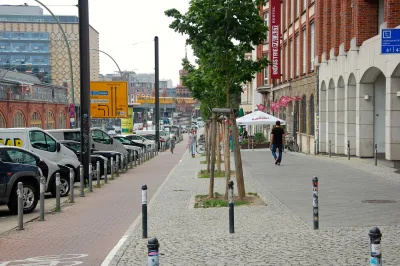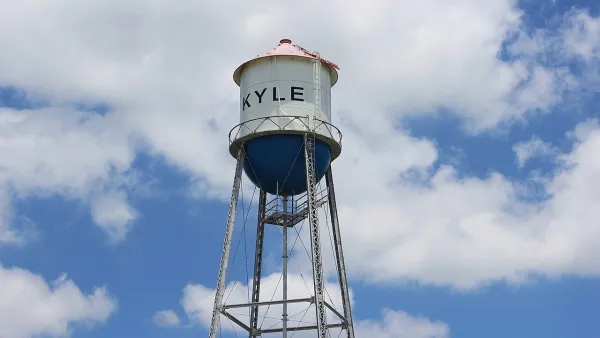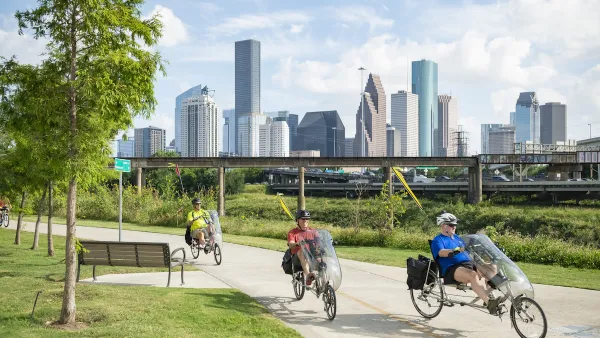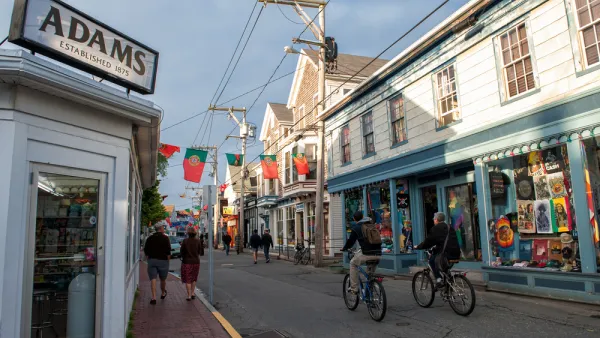Better safety and multimodal ease are not the only benefits offered by complete streets. According to this report, on the average they pay for themselves and then some.

Since the town of Normal in Illinois adopted a complete streets approach, business and walkability have skyrocketed. Laura Searfoss writes, "Today, more than 40 percent of all trips in Uptown Normal are by foot or bicycle. Since these improvements, it experienced a boost in retail sales (46 percent) and attracted more than $160 million in private investment." The Complete Streets project cost Normal $47 million.
While the safety and livability benefits of complete streets are intangible, redesign for multiple modes can also make sound business sense. A recent report from Smart Growth America makes the economic case for investment in complete streets. Arguments include:
- Safer streets protect human life, but they also save a city money: "Each collision that a safer street helps to avoid represents avoided costs from emergency room visits, hospital charges, rehabilitation, and doctor visits, as well as the cost of property damage."
- Complete streets, on average, don't strain public coffers: "The average cost of a project was just $2.1 million—far less than the $9 million average cost of projects in state transportation improvement plans."
- Arteries with complete streets engineering attract greater private investment, boosting tax revenue and land value.
FULL STORY: Complete Streets Are a Bargain

National Parks Layoffs Will Cause Communities to Lose Billions
Thousands of essential park workers were laid off this week, just before the busy spring break season.

Retro-silient?: America’s First “Eco-burb,” The Woodlands Turns 50
A master-planned community north of Houston offers lessons on green infrastructure and resilient design, but falls short of its founder’s lofty affordability and walkability goals.

Delivering for America Plan Will Downgrade Mail Service in at Least 49.5 Percent of Zip Codes
Republican and Democrat lawmakers criticize the plan for its disproportionate negative impact on rural communities.

Test News Post 1
This is a summary

Test News Headline 46
Test for the image on the front page.

Balancing Bombs and Butterflies: How the National Guard Protects a Rare Species
The National Guard at Fort Indiantown Gap uses GIS technology and land management strategies to balance military training with conservation efforts, ensuring the survival of the rare eastern regal fritillary butterfly.
Urban Design for Planners 1: Software Tools
This six-course series explores essential urban design concepts using open source software and equips planners with the tools they need to participate fully in the urban design process.
Planning for Universal Design
Learn the tools for implementing Universal Design in planning regulations.
EMC Planning Group, Inc.
Planetizen
Planetizen
Mpact (formerly Rail~Volution)
Great Falls Development Authority, Inc.
HUDs Office of Policy Development and Research
NYU Wagner Graduate School of Public Service





























